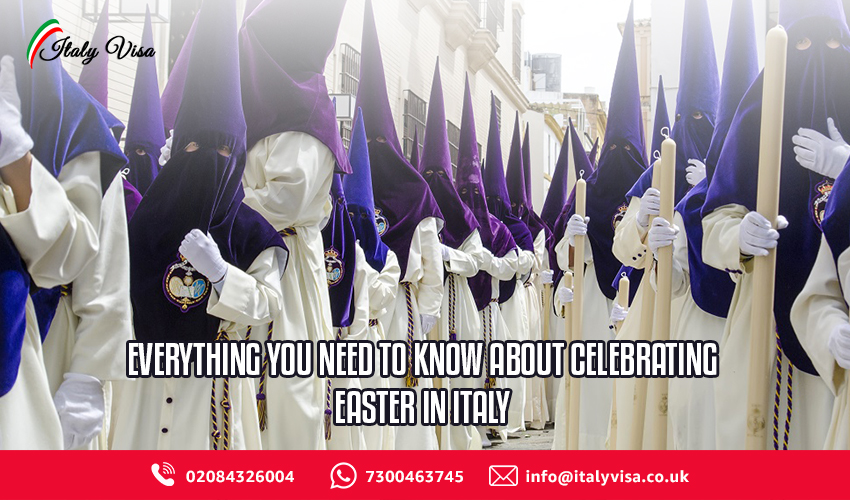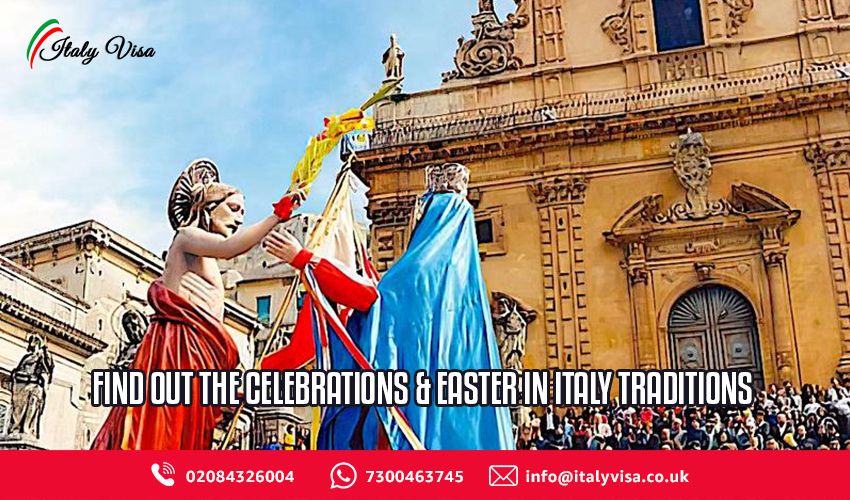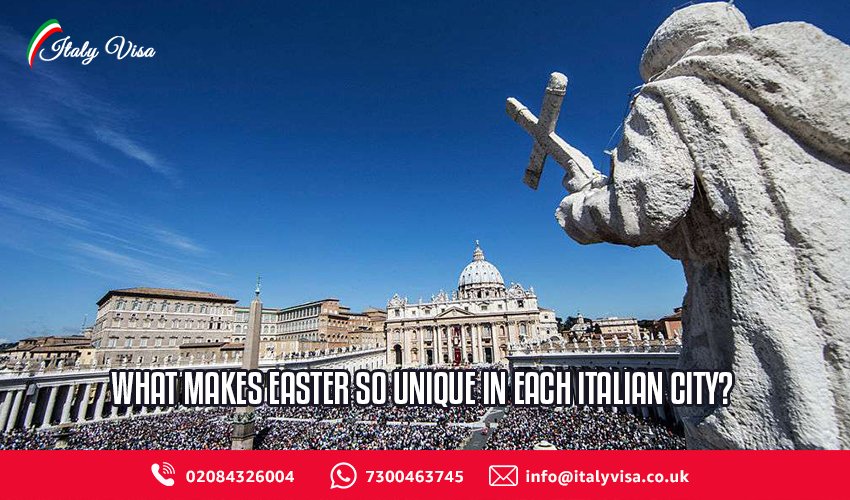
Easter is one of the most significant festivals of the year for Italians. The warm season and outdoor activities officially begin on this day. Amazing concerts, popular festivals, processions and religious rites are a few events organized during this time. If you are also planning to celebrate Easter in Italy and willing to spend your holidays here during this time, you must know everything before going there.
Easter falls low this year. Easter falls on a different day every year because it always falls on the Sunday after the full moon in spring. This rule states that if Easter falls between 22nd March to 1st April, it is considered low, from 3rd to 13th April, it is considered average and high if it falls between 14th to 25th April.

Easter celebrations begin on the preceding Sunday in remembrance of Jesus’ victorious entry into Jerusalem, which was greeted by the waving of palm leaves. Kids as well as elders come home from church on this day holding blessed olive branches.
Thus, the holy Easter week starts during which number of rituals are performed. This marks the start of Holy Week, when several ceremonies are performed. The “Eucharistic celebration” and Last Supper are remembered on Thursday.
Good Friday is Via Crucis day: The streets are illuminated with torches and are traversed by processions retracing the trial, crucifixion and death of Jesus.
The Resurrection is announced by the bells at midnight on Saturday. The most important day is Sunday as Lent, the long fasting period is now over. Chocolate & colorful eggs as well as dove shaped cakes are distributed everywhere. Easter’s significance as the celebration of spring and the reawakening of nature is linked to the egg, which is considered to be the symbol of life that renews itself and aspires to fruitfulness.
The final day of celebration in Italy is known as Pasquetta, or Little Easter, or Easter Monday, also known as the Monday of Angel. It recalls the meeting between the winged messenger and the women who came to the empty tomb. Only after World War II it was added in the national calendar as a public Easter Italy holiday in order to extend the spring break. The use of outdoor and out-of-town adventures has expanded since then.
Those who are going to celebrate Easter in Italy 2024 are going to get spoiled for choices. Let’s check out how…

There are several unique traditions and customs followed in each town of Italy, so let’s explore a few of them.
After the return of Pazzino di Ranieri de’ Pazzi, a Florentine knight who had flown the Holy Cross banner over Jerusalem during the Crusades, this practice was established in 1096. After he came back in Florence, these stones were carried through the streets and used to start the sacred fire for the Easter Vigil.
Today, 150 soldiers, musicians and other participants dressed in 15th-century Easter Italy costume a 30-foot-tall antique cart driven by a team of white oxen in a Sunday procession held in honour of this event.
A lighted procession beginning at the Palatine Hill marks the Pope’s Good Friday walk in remembrance of the Christ’s Via Crucis. A large crowd gathers at Saint Peter’s Basilica to hear the Pope celebrate mass at five o’clock in the evening. Beginning at the Palatine Hill, the Pope leads a lighted procession in remembrance of Christ’s Via Crucis. The pontiff’s journey comes to an end in the Colosseum after stopping at 14 locations to pray and reflect on Christ’s life.
Apart from the unique traditions and customs, super delicious food is available to all the visitors during Easter in Italy. Most renowned dessert is the Columba which is a dove shaped bread made from almonds, egg whites and sugar.
Milan is the place where this cake originated, but it’s now quite popular worldwide. The Pinza Pasquale, a sweet bread from Trieste topped with a carved three-point cross, is another tradition from the north.
The Casatiello from Naples, a salty cake with, sausage, cheese, hard-boiled eggs and salami, is a Southern Easter custom. Sicily, Catania has a unique variety of Easter biscuits ‘aceddu cu’ l’ova’. Once baked, these cookies are given to friends and families as a gesture of good fortune and affection.
To experience all the traditions and customs yourself and try all the food, you will need a visa. So here’s a quick guide for you.

To obtain an online Italy visa, the easiest way is to utilize the services of experienced professionals. It might be difficult to handle the visa application process on your own, but with the help of professional agency, the process becomes simpler and more efficient. Because they are experienced with the intricacies of the visa application procedure and they ensure that all of your necessary documents are in order. Being well-prepared always helps in getting Italy visa appointment easily and obtaining your visa promptly. So plan well and as quickly as possible as Easter approaching soon.
The processing time for Italy visa varies depending on Nationalities and type of visa you are applying, for example whether you are applying for long stay or short stay Schengen visa. Generally Short Stay visa processing time ranges between 7-8 working days and long stay Italy Schengen visa takes around 8-15 working days. For some nationalities it may take around 15 days’ time. Get in touch with us to know more about it in detail.
This is the simple Italy visa application process that we follow to help you get one quickly:
Validity depends on several factors like whether you are applying for the first time or you already had multiple Schengen visas in the past. Italy generally gives visa for 3 months to 2 years or even more but maximum time that you can stay will be 90 days in single trip.
Yes, you may always apply for a multiple entry visa for Schengen countries that will allow you to travel to the country at multiple occasions within a specific time period. However if you want to apply for multi-entry Schengen visa you will need to show multiple ITINERARIES for different countries at the VFS centre for which we can help you with the dummy hotel and flight bookings.